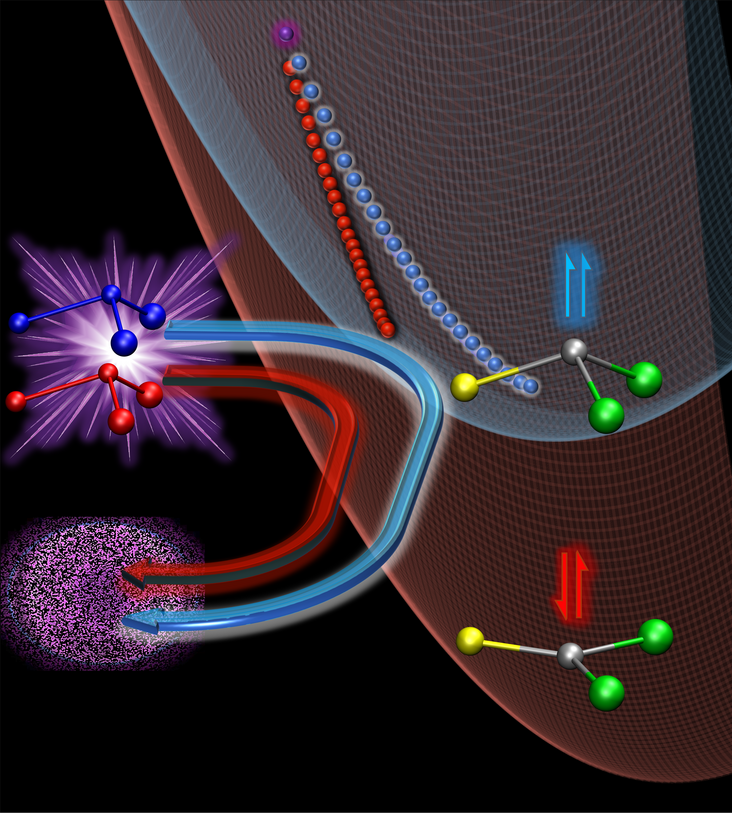New paper on dominant heavy-atom tunnelling at room temperature in spin-crossover reactions

We address the spin-crossover reaction from triplet to singlet thiophosgene, whose accurate theoretical description eluded a host of previous studies. This reaction is particularly difficult to deal with, because it requires both an accurate multi-reference description of the potential-energy surfaces and a rigorous method to capture the dynamics taking place on them.
Since the spin crossover takes place in the so called "Marcus inverted regime'', we employed golden-rule instanton theory, which we recently generalized to this region. By locating the optimal tunnelling pathway, which we refer to as an "instanton'', we uncovered that multidimensional heavy-atom quantum tunnelling leads to a substantial change in the reaction mechanism compared to the typically employed minimum-energy pathways. This leads to a speed-up of the reaction due to tunnelling by a factor of more than 1000 already at room temperature!
Our golden-rule instanton theory does not only provide results in excellent agreement with experiment, but also gives rise to an interesting interpretation of the reaction mechanism. In the inverted regime we encounter the peculiar situation that the molecule on the singlet state exhibits negative temperature, or alternatively: travels backwards in imaginary time.
This permits an analogy to particle physics, where antiparticles can be associated with ordinary particles travelling backwards in time. Hence we lay out an interpretation of the reaction mechanism in terms of molecule-antimolecule creation and annihilation.
Spin Crossover of Thiophosgene via Multidimensional Heavy-Atom Quantum Tunneling. Eric R. Heller and Jeremy O. Richardson, Journal of the American Chemical Society. DOI: 10.1021/jacs.1c10088 Eric R. Heller, Jeremy O. Richardson